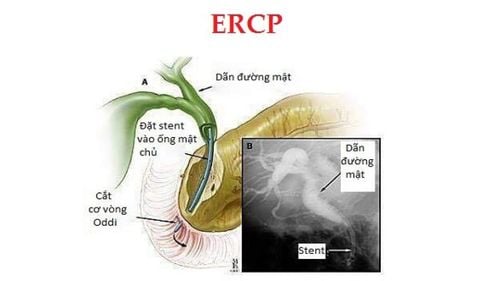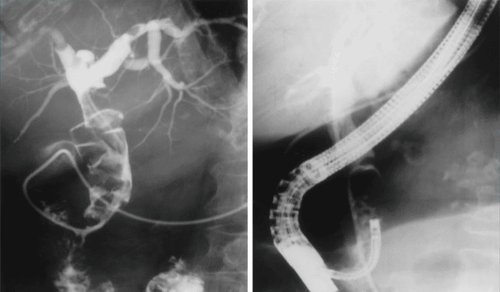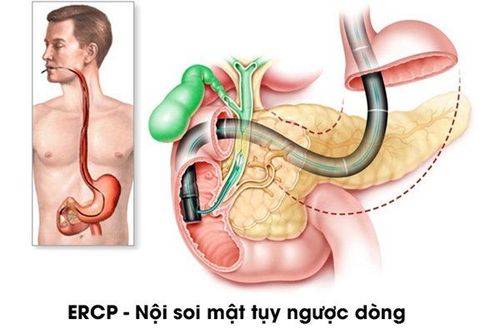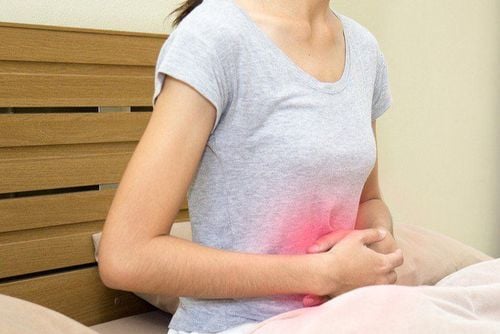This is an automatically translated article.
The article is professionally consulted by Master, Doctor Dang Xuan Cuong - Emergency Resuscitation Department - Vinmec Hai Phong International General Hospital.Endoscopic retrograde cholangiopancreatography has many advantages to help diagnose and treat biliary tract diseases and pancreatic diseases. Endoscopic retrograde cholangiopancreatography is applied in many large hospitals, including Vinmec International General Hospital.
1. What is endoscopic retrograde cholangiopancreatography?
Endoscopic retrograde cholangiopancreatography (ERCP) is endoscopic retrograde cholangiopancreatography (ERCP) is an endoscopic technique of duodenum under X-ray light to diagnose and treat a number of diseases of the biliary tract and pancreas.Endoscopic retrograde cholangiopancreatography (ERCP) is performed by a gastroenterologist or surgeon who has specialized training in this technique. The bronchoscope is a long, flexible tube with a light and camera on the end. Because the procedure involves sedation or general anesthesia, the patient will be consulted by an anesthesiologist before the procedure.
2. Steps to perform endoscopic retrograde cholangiopancreatography
The technique is conducted to insert the catheter into the biliary or pancreatic ducts through the duodenoscope, through which contrast is injected into the biliary or pancreatic ducts for the purpose of diagnosing and treating biliary and pancreatic diseases . Local anesthesia of the back of the throat or intravenous sedation Patient position: Lie on your side on the bed, the doctor will ask to swallow the end of the endoscope. Modern endoscopes are usually smaller than the index finger and quite easy to swallow. The doctor will gently push the scope down the esophagus, stomach, and into the duodenum. Specifically, the scope is inserted into the mouth, through the esophagus, stomach, and then to the place where the bile duct empties into the duodenum; This is called the duodenal papilla. A plastic (thin) catheter is inserted into the bronchoscope to reach the tip of the tube and then into the duodenal papilla and the bile duct. Next, the doctor will inject contrast material into the bile ducts and take X-rays. Observe the inside of the stomach and duodenum through a monitor connected to the endoscope. Air is pumped into the stomach and duodenum through a channel in the endoscope, which helps to stretch the surface and make it easier to see. The endoscope also has a channel on the side for instruments to pass through, used by doctors for many different purposes such as easy detection of narrowing of the duct, stones stuck in the tube or tumor compressing the tube, ... Biopsies of the medial surface of the duodenum, stomach, bile ducts, and pancreatic ducts proximal to the papilla. The endoscope is gently withdrawn at the end of the procedure. ERCP can be done in 30 minutes to 1 hour depending on the purpose of the test.
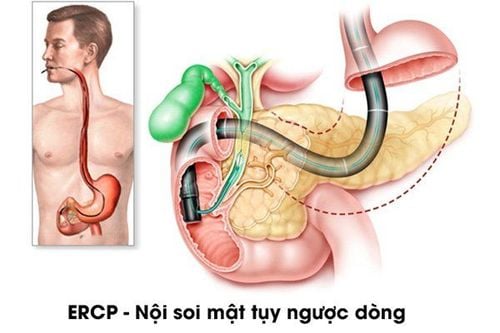
If abnormalities are detected, the doctor can perform techniques to intervene to treat or improve the condition. For example, if a stone is found, the doctor may dilate or widen the duodenal papilla to remove the stone from the bile duct with a wire. Sphincter papillae are often cut with a cauterizer (with an electric current) during the procedure (sphincterotomy), allowing for better drainage of the bile ducts. If there is a narrowing of the bile duct, the doctor will place a short plastic or metal tube called a stent into the narrowing to drain the bile.
3. Indications for endoscopic retrograde cholangiopancreatography?
This method is used in the diagnosis of pancreatic biliary tract diseases such as:
Extrahepatic obstructive jaundice of unknown cause; Dilatation of the biliary tract; Gallstones with dilated common bile ducts; Cholangiocarcinoma; Oddi motor dysfunction; Pancreatic duct dilation. Endoscopic retrograde cholangiopancreatography treats the following diseases:
Removal of common bile duct stones in case of common bile duct stones; Remove pancreatic stones; Oddi muscle amputation; Nasal bile drainage; Biliary stent placement in cases of hilar cholangiocarcinoma, extrahepatic cholangiocarcinoma when surgery is no longer possible, benign biliary stricture, large bile duct stones that cannot be removed immediately, stones common bile duct, but patients in severe condition do not allow stone removal, biliary tract infections need to be drained; Placement of a pancreatic stent.
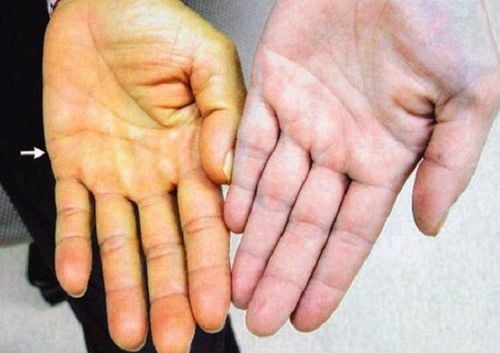
Vàng da tắc mật ngoài gan cần nội soi mật tụy ngược dòng
4. Possible Complications After ERCP
Most ERCPs are done safely and without problems. Some people have a mild sore throat a few days later. You may feel tired or drowsy for a few hours due to the sedation. Uncommon complications include: damage to the intestines, bile ducts or pancreatic ducts caused by the endoscope causing bleeding, infection and, rarely, perforation.
See your doctor for a check-up when you have symptoms such as:
Abdominal pain - especially pain that is increasing, severe and of a different nature than the usual heartburn, indigestion; Fever; Shortness of breath; Vomiting blood ; Pancreatitis.
5. Why should endoscopic retrograde cholangiopancreatography at Vinmec
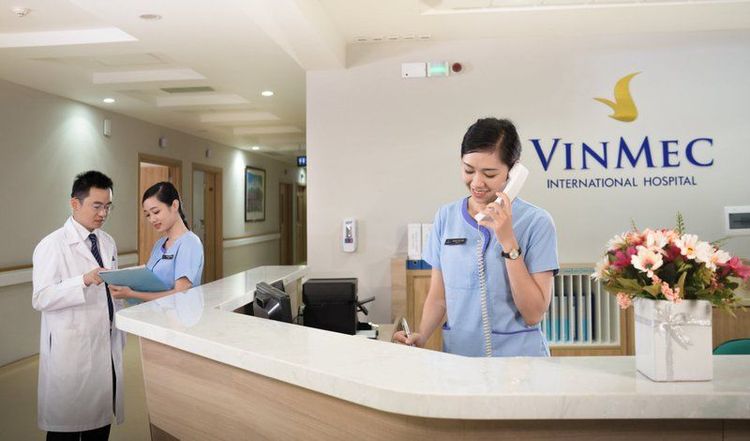
Bệnh viện Đa khoa Quốc tế Vinmec - địa chỉ nội soi mật ngược dòng uy tín
Performing ERCP procedure at Vinmec International General Hospital allows endoscopic diagnosis and treatment under sedation safely, helping patients no longer be afraid of endoscopy with the most modern technical machines; The Department of Endoscopy is designed for patient privacy, comfort and safety. In addition, strict adherence to the principles of sterilization and disinfection to prevent the spread of pathogens through endoscopes to patients and medical staff. Fully equipped with facilities and equipment to allow endoscopic diagnosis and treatment under sedation, helping patients not feel pain and stimulation when performing the procedure; The ERCP procedure uses a modern soft bronchoscope system, Endocut's electric knife has the advantage of not causing pancreatitis, pancreatic reaction; The implementation time is fast, safe, there are few complications with the success rate > 98%; A team of leading reputable doctors with extensive experience In addition, the strict adherence to the principles of sterilization and disinfection to prevent the spread of pathogens through endoscopes for patients and medical staff medical conditions, exposure to harmful disinfectant chemicals, as well as ensuring the patient's privacy, comfort and safety when going to the endoscopy. After the procedure, the patient is strictly monitored by a team of professional medical staff, complications can be detected early for timely treatment. Master. Doctor Dang Xuan Cuong received intensive training in the field of emergency resuscitation and poison control at Hanoi Medical University and Bach Mai Hospital. With 14 years of experience in the field of emergency resuscitation and poison control, Dr. Cuong Nguyen is the Head of Functional Exploration Department, Deputy Head of Emergency Resuscitation Department, .. at Hai Duong Provincial General Hospital and participates in lectures. Clinical teaching at Hai Duong University of Medical Technology. Currently, Dr. Cuong is an Emergency Resuscitation doctor at Vinmec Hai Phong International General Hospital.
Please dial HOTLINE for more information or register for an appointment HERE. Download MyVinmec app to make appointments faster and to manage your bookings easily.




